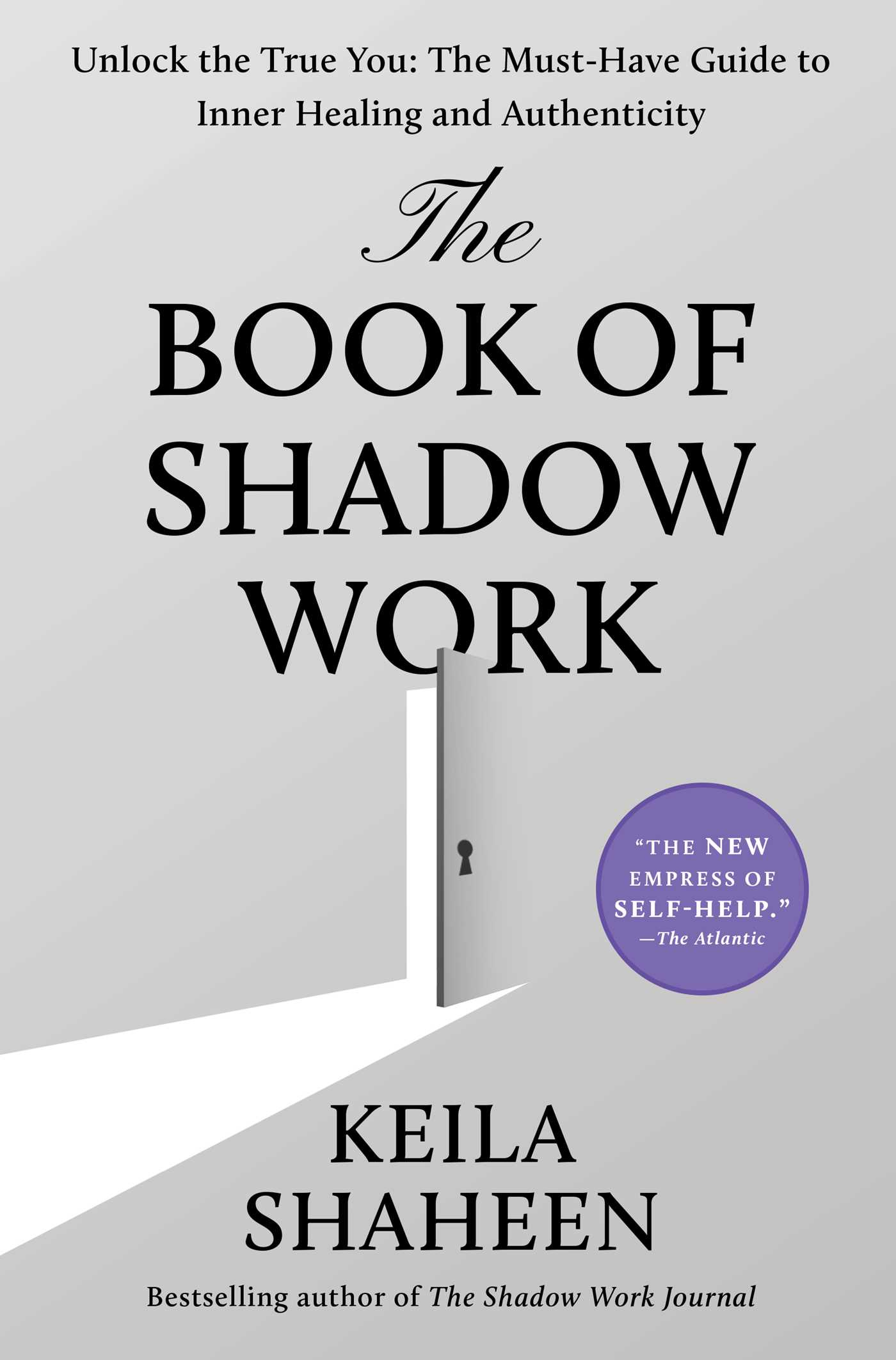Keila Shaheen on Shadow Work
"Healing isn’t an end point; it’s a process."
Greetings, Seekers of Light!
For those celebrating, we wish you a Merry Christmas! It’s a perfect time to reflect on the transformative power of love and self-awareness—a theme at the heart of this week’s Soul Boom podcast.
This week, Rainn sits down with influencer, author, entrepreneur, and mental health advocate Keila Shaheen. Together, they explore the profound work of shadow integration—a practice of facing our inner darkness to find healing, wholeness, and resilience.
To accompany the podcast, we’re sharing an excerpt from Keila’s illuminating The Book of Shadow Work. In this passage, Keila reflects on the meaning of shadow work and the courage it takes to confront our inner shadows. As C.G. Jung wrote (and Keila quotes), “Everyone carries a shadow, and the less it is embodied in the individual’s conscious life, the blacker and denser it is. If an inferiority is conscious, one always has a chance to correct it. . . . But if it is repressed and isolated from consciousness, it never gets corrected.”
Shadow work isn’t about banishing darkness, but about transforming it—turning it into a source of strength, wisdom, and self-awareness. It’s a reminder that light shines brightest when we’ve made peace with our shadows.
We hope both this week’s conversation and the following excerpt inspire you to approach your inner work with compassion, curiosity, and a renewed sense of hope as we move into a new year.
Wishing you a restorative holiday season,
The Soul Boom Team
What Is Shadow Work? How Do You Start?
By Keila Shaheen
The shadow sounds scary, doesn’t it? Dark, ominous, formless, foreboding, morally shady, elusive, creepy, even evil. When we talk about the shadow as Jung defined it—the part of our unconscious mind that contains what we reject and hide from—the very thought of its existence can put us on edge, like we’re not really our own masters. Like we’re carrying around this bag of toxic garbage, and it’s weighing us down. But according to Jung, the shadow will always be with us, and it serves a clear purpose. It’s not trash; it’s compost.
I always knew, even before I read Jung, that childhood experiences laid the foundation of our emotional frameworks. Traumas leave imprints. They shape our reactions, our fears, and our joys, and then as we grow, they get buried under the façade of responsible adulthood. When these old wounds are triggered, the reaction is often disproportionate to the present situation, leaving us confused and overwhelmed. It’s a journey to unpack these layers, to understand that our present self is in constant dialogue with the shadows of the past, and the shadow of the present too. Acknowledging this is not a sign of weakness; it’s an act of bravery, a step toward healing not just the present, but also the past that silently guides us.
Can you imagine yourself as a small child, born helpless into a family with its own dynamics and value systems? You knew, even in infancy, that you needed to adjust to the powers that be to survive…
It is the self-preserving, self-protective part of us that pushes away what is deemed unlovable, unacceptable, and dangerous by our families and the larger world. As we grow up, that lifesaving reflex develops into a crucial skill for getting by. What is successful moves into the limelight. Everything left over that doesn’t fit, that feels shameful or enraging or destabilizing, or even too brilliant and visionary, is relegated to the shadow…
Jung believed this dynamic was common to all humans since the birth of our species. So, if we have all always had a shadow, then how can having a shadow be wrong? Jung refused to moralize the question. To the contrary, he felt that the modern world and Western religions’ tendency to insist on rigid dichotomies of good and evil gave the shadow even greater destructive potential by pushing it further out of conscious reach. The harder we try to deny our shadows, the more we villainize, other them, and proclaim ourselves as better than all that, the stronger they become…
Jung defined the shadow not just as the seat of so-called negative emotions and complexes, but as a rich and meaningful part of the greater self, crying out to be consciously acknowledged and integrated into a healthier, more vibrant whole. Integrating that through shadow work can be an intimidating idea, but it is not a penance. It is a hunt for treasure. And besides, life demands pushing our limits to thrive. For humans, that means facing our greatest darkness…
As we better understand trauma and suffering today, some of us might be tempted to see them as inescapable, crippling conditions and assume their trauma as their whole identity, a painful diagnosis or episode as the end of the story rather than a new chapter with its own potential for incredible evolution. This misconception can make us retreat into our shells, nursing what hurts us in isolation, believing that to show our scars is to show weakness. To be weak is to be needy, to court exploitation and rejection. Most of us have heard of post-traumatic stress disorder. How many of us have heard of its very real counterpart, post-traumatic stress growth?
Shadow work teases out your potentially destructive patterns and asks you to explore them with curiosity rather than fear, eventually embracing them as valuable parts of you. It is a deeply personal, therapeutic journey where you create a safe container, either alone or with guidance, to observe and dialogue with yourself, and ultimately integrate what you discover into a richer, healthier wholeness. The goal of this work isn’t to wallow in pain but to know what causes it, in the light of self-acceptance and understanding. Nor is it to banish the darkness, but to welcome it, understanding that what you once sought to render invisible is as important a part of you as the palatable mask you’ve created to get by.
Given the amazing buffet of mental health treatment options out there today, it’s worth asking how to know if you need shadow work rather than some other kind of therapy or self-help practice. My feeling is that, because the shadow is always part of us, there’s never anything to be lost by going deep, and doing so often…
If you’ve decided to seek out a mental health practitioner to do shadow work, use your best judgment. It’s important that anyone who endeavors to guide people through such deep and often triggering territory continues to work on their own shadows too. Shadow work is powerful and vulnerable, for both healer and patient…
Treating your shadow with reverence and respect, not fleeing from it compulsively or numbing it away with distraction, will pay you back ten thousand times over. You can not only achieve a greater sense of wholeness and self-acceptance but unlock pathways to healing and self-discovery that were previously obscured by fears or prejudices. Hidden talents come to life. Sustaining passions emerge. Joy deepens. Compassion grows. Intimacy and connection to others too. Purpose and resiliency are claimed. Manifesting happens more effortlessly. We are simply more in the zone.
Ultimately, shadow work, at whatever frequency you choose, is a lifelong path, one that brings greater rewards the more you do it. No matter where you are in the process, know that in jumping into the ocean of your unconscious, you will resurface as a changed person.
Isn’t that the point? Humans are not designed to remain static, replaying old narratives day after day, reenacting them in every aspect of existence. Like strong trees, we are meant to grow beyond them. Being human means we are never at a final state. We are perpetually in the process of becoming, unfolding, learning, growing, and transforming. There’s no such thing as a “fully healed” version of you, where finally all the drama is over. Healing is always in process, as is simply being. Shadow work facilitates the shedding of our old layers, allowing the embrace of new beginnings. What new version of yourself will you step into? What more genuine expressions of you will you start to embody?
Excerpts from The Book of Shadow Work by Keila Shaheen. Keila Shaheen is the creator of the Zenfulnote app and bestselling author of the viral sensation, The Shadow Work Journal. Her transformative work has been featured in The New York Times, Billboard, and The Atlantic. Keila is dedicated to fostering mental health awareness and emotional healing, and serves as a NAMI ambassador. Through her writing and music projects, she invites others to explore the interplay of light and shadow that dwells within, inspiring a deeper connection to themselves and their potential. Find her on social media: @zenfulnote.








So true!! I have been working on self discovery for over 40 years. Processing is an art and you should be open to whatever mediums you need to work through your lastest canvas. Each adventure asks for a different technique.
Here's the thing. I found my way back from childhood sexual exploitation. I wrote the entire adventure down in the hope that it might provide a roadmap of possibilities. I am dropping it in serial form right here on Substack.
Church helped but it did not work. The 12-Steps of AIcoholics Anonymous worked but did not solve the problem. The solution was discovered in a deep dive into my unconscious mind where I found three younger selves and two monsters. We were at war, each part with its own agenda. No part was aware what the other was doing, but the chaos surrounding us bore witness to the inner struggle. Today we function as one integrated unit. Will you visit my page and help me get the information out? Thank you! Here is a blurb from my About Page.
CAUGHT UP Truth and Metaphor | An Imaginary Tale…
…is an autofiction novel about a lifetime spent underwater struggling to find the surface. It is the journey of an unlikely heroine from childhood trauma to redemption. It is about a spiritual awakening and explores the intricate and often painful path to wholeness. The only way out is in.
Petra has no memories, and no one is talking. Like pieces of a puzzle, a tidbit of information here and an arsenal of misinformation there, she must reclaim her suppressed memories. Searching for freedom, she survives the perils of addiction, finds sobriety and takes a hero’s journey into the underworld of her subconscious mind.
It is a harrowing tale, shot through with unlikely humor and fantastical creatures. Finally, it is a story of triumphant redemption and the power of the human imagination to reclaim and reconstitute the repressed pieces of a splintered personality. It is a roller coaster ride from the depths of hell to triumphant success that finishes with a big Hollywood ending.